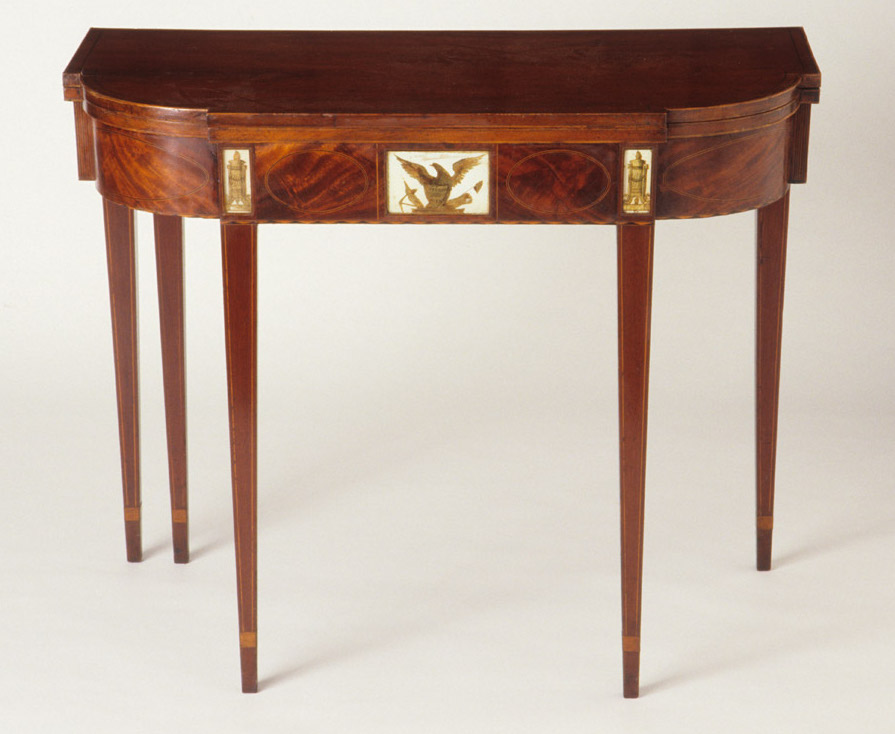Even though Philadelphia plays a major role in Hamilton: An American Musical, we’re still waiting for the road company to come to town this fall. While we wait for it (I know, I know, I couldn’t resist a Hamilton lyric quote), there’s a small but choice exhibition to visit at nearby Winterthur Museum.
Hamilton and Burr: Who Wrote Their Stories? focuses on the fatal duel between Alexander Hamilton and Aaron Burr and its aftermath, and how the legacies of both men were shaped by their families and friends. The exhibition draws on the museum’s own collections, and uses objects as diverse as printed handkerchiefs, children’s ceramic mugs, newspapers, and brass cloak pins to show how Americans honored - and reviled - Hamilton and Burr long after the duel. (I’ve already written here about one of the most evocative pieces in the exhibition: the letter that Burr wrote to Dr. David Hosack inquiring after Hamilton’s condition on the day following the duel.) Click here for more information about Winterthur and the exhibition.
Complicating Burr’s legacy is the fact that there is comparatively little remaining that once belonged to him. In addition to Hamilton’s vast collection of letters and other papers, the home - called The Grange - that he built in upper Manhattan is today preserved as a National Parks site. His portraits, books, letters, and many of The Grange’s furnishings were also kept as cherished mementos by his large family and numerous friends. In contrast, Burr’s beloved Manhattan home, Richmond Hill, and all its contents were seized by his creditors after he fled New York following the duel.
Burr was a man of taste who delighted in surrounding himself with art, books, and fine furniture that reflected his refinement. Today little remains that can be definitively identified and connected to him, but in the Winterthur exhibition is an elegant card table, right, that might very well have been commissioned by Burr directly following the hard-fought presidential election of 1800. The two Democratic-Republicans, Burr and Thomas Jefferson, defeated Federalist incumbent John Adams, but tied with one another in electoral votes, resulting in the election being decided by the House of Representatives. There Jefferson was elected by a single vote, and Burr became his vice-president.
The panel, left, on the front of the table commemorates this election. The names of Burr and Jefferson appear on a shield held by a patriotic eagle, surround by an anchor, an American flag, a cannon, and a liberty cap. Only one other such table is known to exist, and it’s likely they were created as a pair by a now-unknown New York City cabinetmaker.
With its inlaid banding and slender, tapering legs, the table is an elegant piece of furniture, combining mahogany, walnut, and satinwood along with the gold-foiled glass panels. For a game of cards, the table’s top is hinged to unfold, and one of the legs swings around for support. It’s difficult to imagine any other wealthy individual in Federalist-dominated New York except Burr ordering a celebratory table like this, and very easy to picture him proudly showing the pair off to his guests at one of his frequent entertainments at Richmond Hill.
When this table was made around 1800, Burr was at the top of his political game, with popularity, power, and prestige. To be sure, he’d lost this presidential election, but he’d every reason to believe that in another four years, he’d be next in line to replace Thomas Jefferson in Washington. But by 1804, everything - everything - would change, and Burr’s life would never be the same.
Above: Card Table, unknown maker, c1800, Gift of Henry Francis du Pont, Winterthur Museum, Library, and Gardens.
Many thanks to Rebecca Duffy, curator for this exhibition, for her assistance with this post, and for the personal tour.
My new historical novel, The Secret Wife of Aaron Burr, is now available everywhere, in stores and online. Order here.



